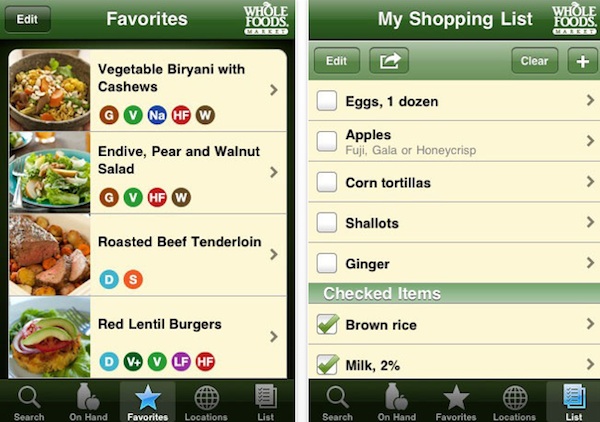- Category: Mobile Web development
-

- South
- Charleston, SC
- We are South: a full service digital design agency. Our desire is to create the most custom-tailored, innovative, and engaging experiences possible for you and your business.
Other articles by South
Go Mobile or Go Home
If you're not in your customers' pockets, you're going to get left in the dust.
Once upon a time, not so very long ago, being available to your customers online 24/7 was enough.
But then along came the smartphone – and its even more agile cousin the tablet – and the expansive mobile data networks needed to support them. Suddenly the Internet came unfettered from desktops anchored to offices and homes and became a ubiquitous presence in our lives.
Today 24/7 just doesn’t cut it. You must be available to your customers not only anytime but anywhere. At the corner coffee shop. In line at the supermarket. At the airport. In the very aisles of your competitor’s store.
You may not know for certain when or where your customers might be looking for you, but you can be absolutely sure that you must be there if you want to stay competitive in today’s market.
Consider this statistic: smartphones and tablets currently drive nearly seven percent of digital traffic in the U.S.
If that number doesn’t wow you, try this on for size: experts predict that by 2013 – that’s next year – more people will access the Internet via phone than computer.
It all boils down to this: the proliferation of smartphones and tablets in the past few years has changed the game. If you’re in it to win it, you have to go mobile or go home.
But where do you start?
Look before you leap.
Before you take the plunge into the world of mobile, it’s a good idea first to figure out where you currently stand so you know where you need to go and how best to get there.
Peruse your website on as many different devices as you can get your hands on. Put yourself in the shoes of your customers, and evaluate the quality of your experience as you navigate through your site.
How easy or difficult is it to select the specific link you want?
If you have a lot of images on your site, how long does it take to render on a mobile device?
Can you quickly and easily complete critical actions like locating contact information, filling out an inquiry form or even making a purchase?
If you identify any obstacles, or if the overall experience is frustrating in any way, you need to take action to make sure you give your business the best chances of capturing and converting mobile browsers.
There are a number of ways you can bring your site into the mobile era. To decide which approach is the right fit for your business, you must weigh your options based on your growth objectives and your customer’s browsing habits.
Option 1: Build a dedicated mobile site.

A good mobile website is not simply a shrunken version of your primary site. It’s designed specifically to deliver an experience that’s optimized for the needs and preferences of the mobile user.
Keep in mind that these users aren’t typically casual browsers; they’re usually after a specific bit of information or seeking to accomplish a specific task. As a result, mobile websites don’t usually offer all the bells and whistles of their desktop equivalents. Rather, the content and functionality are pared down significantly to offer only those features that are most useful to those on the go.
For example, while mobile users frequently comparison shop on their phones, they might not be as likely to actually go through the entire purchase process on their handheld device. As a result, you may not need to offer a full-fledged shopping cart on your mobile site. Instead, you might offer the capability for customers to log in to their account and save desired products to a wish list so they can quickly and easily complete their purchase later when they return to their desk.
Great mobile websites have certain elements in common. They focus on critical needs, such as providing access to key services and products and contact information. They limit the use of images to minimize page load time. They offer easy, intuitive, finger-friendly navigation. If forms are included, they are streamlined and ask only for the most essential information. They don’t employ Flash, since Flash-based content is inaccessible to all iOS users.
Option 2: Employ responsive design.

Responsive design is the concept of building a website so that the layout of the site adapts and changes according to the resolution of the user’s browser, which means that it looks just as good and performs just as well on a 27-inch desktop display as a 3.5-inch iPhone and all screen sizes in between.
The design is fluid and adapts to the the browser and the platform on the fly. However, the change is more than just a straightforward scaling effect; rather, certain key elements within the design – such as navigational menus, links and search fields – shift and transform according to the resolution of the browser.
Employing responsive design allows you to deliver a robust experience to all users without the need to build and maintain a separate dedicated mobile version of your website.
Option 3: Get app-y.

A native app can be a fantastic mobile marketing tool, if done right.
However, it’s not the right solution for everyone. Before you go down the app-building rabbit hole, there are a lot of questions to answer and obstacles to overcome.
How big is your customer base? Apps require a certain scale to make sense. If you’re a mom-and-pop bakery, for example, you could theoretically develop an app that would let your customers design their own cupcakes and place their order right from their phone. While it would surely be a fun gimmick, it doesn’t fulfill a broad-based need, and the app’s ability to generate additional revenue would probably never offset the cost to create and maintain it.
That brings us to another point: you must carefully consider your ROI. If you sink many thousands of dollars into development and get it approved, will people really use it? If you can’t develop an app that offers something people want and will use frequently – whether that’s in the form of utility, convenience, content or all of the above – chances are good that your investment will end up buried in the app marketplace collecting dust.
Remember, too, that when you’re dealing with apps, you either have to develop a version for each operating system (Android, iOS, etc.), which can be a costly proposition, or choose just one and ignore the needs of a huge percentage of your potential customer base, which is never a smart business decision.
Be a contender.
When it comes to mobile, convenience and conversion are the name of the game. From a business growth perspective, it’s critical to ensure that your products or services are easily accessible to mobile users so you can boost your chances of capturing and converting an increasingly untethered customer base.